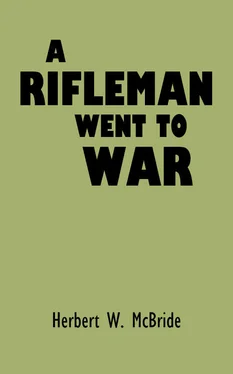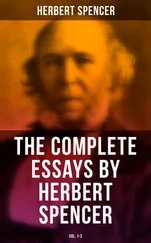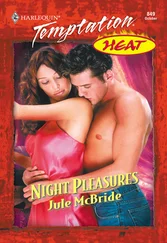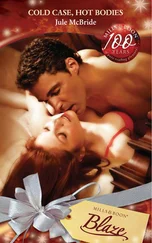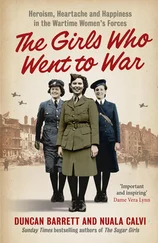I SPENT a couple of months with the Twenty-first Battalion and then, returning to Ottawa to join my own outfit, I soon learned that they, the Thirty-eighth, were slated to go to Bermuda to relieve the Royal Canadian Regiment which was doing garrison duty. That was not so good. I had come over to get into a real war, and garrison duty in Bermuda did not appeal to me a bit. Had I known then, as we all know now, that the Thirty-eighth would get to France soon enough to get into all the fighting any man could ask for, I suppose it would have been different, but at that time my chief worry was that the war would be over before I could get there.
I was mad; yes, crazy mad. I went out and tried to drink all the whiskey in Ottawa and made such an ass of myself that the higher-ups were glad to get rid of me. Prior to this, however, I had wired to Colonel Hughes, at Kingston, asking if he would accept me as a private in his battalion, and he had answered: ‘Yes, glad to have you.” My resignation was quickly accepted and I took the train for Kingston where I was sworn in next day as a private and assigned to the Machine Gun Section (The Emma Gees).
Well, there I was, a machine gunner, but machine gunners in those days also carried rifles. That was enough for me. I was with an outfit that was sure to get into the war and that was enough. We trained at Kingston all winter. There was the usual routine of physical exercises, close order drill, (very little of this, however), bayonet exercises and occasional small maneuvers that would come under the head of “Minor Tactics.” But the best thing we did was to march and shoot — march and shoot. There was no especial training for trench warfare — that came later, in England. Here, in Canada, the program, which was certainly laid out by an officer who knew his business (I suspect it was Colonel Hughes, himself), was one calculated to do just two things: to put the men in physical condition to endure long marches and to thoroughly train them in the use of their weapons. In the latter years of the war, I had occasion to compare this system with that laid down in hard and fast schedules for the training of the United States Armies and the more I saw of our (U.S.) system, the better I liked the Canadian.
We had route marches in all kinds of weather, and winter in Ontario is real winter. On one occasion, we marched from Kingston to Gananoque, through snow a foot deep and came back the next day — twenty-two miles each way. Another march took us to Odessa — about the same distance there and back, this time with full packs. But on one or two days of each week we went out to the Barriefield rifle range for target practice. Sometimes when we were out there shooting, one could have skated all over the place on the ice. But we surely were learning a lot and getting seasoned for the bitter days to come. Toward the latter part of this training, we had rifle competitions every week, between picked teams from the different companies and detachments. In these matches the Machine Gunners always managed to give a good account of themselves.
In the Battalion were many of the best riflemen in Canada, including Major Elmitt, (member of the Canadian Palma team of 1907), Sergeant-Major Edwards, Sergeant Williams, (of the Machine Gun Section) and many others whose names have now escaped me. The Colonel, himself, took part in the firing as did all the other officers. I particularly remember how enthusiastic Major Bennett was about this training. He was Second in Command. I just mention these things to show how it was that this particular battalion developed into a real aggregation of riflemen. In the months and years that followed, that accomplishment, on numerous occasions, saved them from disaster such as overwhelmed certain other outfits not similarly prepared. All the patriotism, courage and determination in the world can never compensate for the lack of thorough instruction in the use of the arm with which the soldier is equipped.
We were using the Ross rifle, a splendid target weapon, and Mark VI ammunition — the old, blunt nosed bullet. Later, in England, we switched to the Mark VII with its spitzer bullet and checked up on the changes in elevation required.
Instruction in rifle shooting in the British service, which, of course, includes Canada, is, in the main, similar to that followed in the United States Army. That is, the recruit is first thoroughly grounded in the theory and practice of sighting and aiming and then put through a course of firing with reduced loads at short (gallery) ranges. When he first goes to the range for instruction with the service ammunition however, the first thing he is required to do is to shoot a “group” at one hundred yards. In this practice, the man fires five shots without any marking. It is simply a test of his ability to sight, aim and hold properly. After he has completed his string, the target is withdrawn and the officer in the pit proceeds to measure the group. No consideration is given to its location on the target: size only counts. To avoid delays in making this measurement, a device consisting of a series of wire circles is used, the inner circle being about four inches in diameter and the others running up to something like fifteen inches — if my memory serves me right. There is an official scale for rating the various sized groups. If the man cannot keep his group within the limits of the maximum circle, he goes back for further preliminary instruction and practice. This firing, as is all the regular slow fire practice in the British service, is done from the prone position.
While the sling on the Ross (and the Enfield, too, for that matter) is not especially designed for use in firing, by common practice and authorization it may be taken out of the butt swivel and rigged up much the same as we used to do with the old .45 Springfield and the Krag rifles.
I have said that the musketry instruction was, in the main, similar to that of the United States Army and this is true. The object of both is to instruct the man in the fundamentals of sighting, aiming, holding and firing the rifle. The weakness of both, in my opinion, lies in the lack of sufficient practice after the above instruction has been assimilated. All of us who are or have been in the military service are all too familiar with the “set schedules” for training in this or that branch of the soldier’s educational work. The time for instruction firing is usually limited — as is the ammunition allowance — and the record firing is crammed into a few hectic days. Everything must be done just so and so.
Well, perhaps that is all right, although I cannot see it that way. My idea of training a rifleman would be to put him through the full instructional course and then give him a lot of ammunition and let him go out on the range, at odd times, and work out his own salvation. Have targets available at any time, with men to work them, but keep no records excepting those which the man would be encouraged to keep for his own private information.
Some men learn very quickly while others have to keep hammering at any subject before the right idea gets into their noodle. The whole matter can be likened to the golf player who never goes out but that he plays a “match” with someone or other. He never gets the same shot twice, hence has no opportunity to check up on his errors as they occur. The result is that he joins the great army of “ninety-to-one hundred” players and remains in that class the rest of his life. On the other hand, if he be the one in a thousand who realizes the importance of practice, he will take a couple of dozen balls and a caddy and hunt up some deserted fairway and spend hours in endeavoring to master some one club. This man, given time, will be one who shoots consistently in the seventies.
Читать дальше
